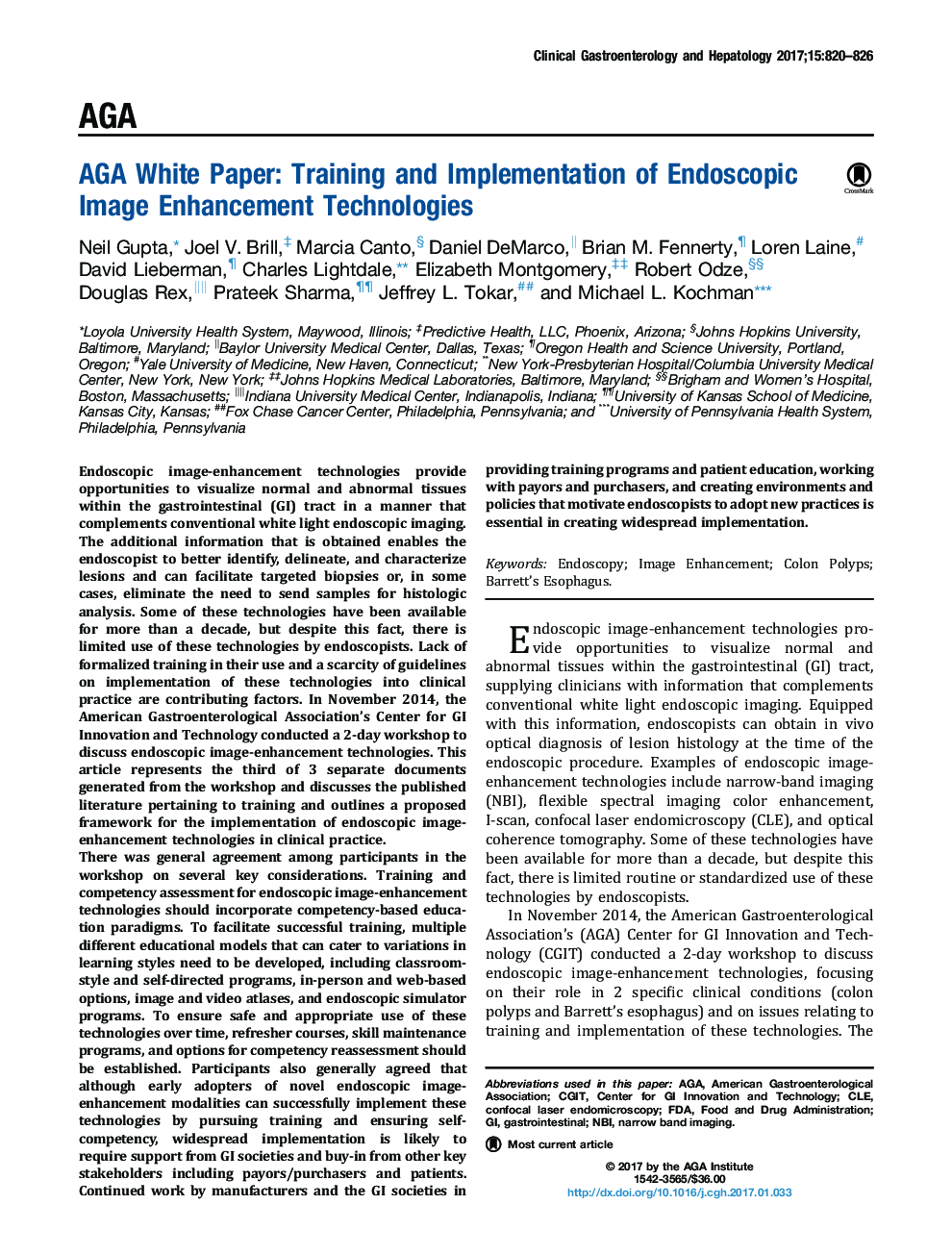| Article ID | Journal | Published Year | Pages | File Type |
|---|---|---|---|---|
| 5657555 | Clinical Gastroenterology and Hepatology | 2017 | 7 Pages |
Abstract
There was general agreement among participants in the workshop on several key considerations. Training and competency assessment for endoscopic image-enhancement technologies should incorporate competency-based education paradigms. To facilitate successful training, multiple different educational models that can cater to variations in learning styles need to be developed, including classroom-style and self-directed programs, in-person and web-based options, image and video atlases, and endoscopic simulator programs. To ensure safe and appropriate use of these technologies over time, refresher courses, skill maintenance programs, and options for competency reassessment should be established. Participants also generally agreed that although early adopters of novel endoscopic image-enhancement modalities can successfully implement these technologies by pursuing training and ensuring self-competency, widespread implementation is likely to require support from GI societies and buy-in from other key stakeholders including payors/purchasers and patients. Continued work by manufacturers and the GI societies in providing training programs and patient education, working with payors and purchasers, and creating environments and policies that motivate endoscopists to adopt new practices is essential in creating widespread implementation.
Keywords
Related Topics
Health Sciences
Medicine and Dentistry
Gastroenterology
Authors
Neil Gupta, Joel V. Brill, Marcia Canto, Daniel DeMarco, Brian M. Fennerty, Loren Laine, David Lieberman, Charles Lightdale, Elizabeth Montgomery, Robert Odze, Douglas Rex, Prateek Sharma, Jeffrey L. Tokar, Michael L. Kochman,
